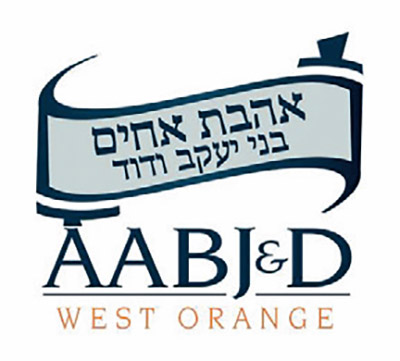

Congregation Ahawas Achim B’nai Jacob and David (AABJ&D) of West Orange has had an inclusion committee since 2010. Over the years, the committee has identified a number of different issues to be addressed at the annual Shabbat Shalem, which is part of Jewish Disabilities Awareness and Inclusion Month. Among them has been the inclusion of people with developmental disabilities, visual impairments, hearing impairments, aphasia and mental health challenges, as well as seniors. The group has even looked at the concept of bikur cholim and explored how it can be expanded.
As part of AABJ&D’s commitment to inclusion of all Jews in the community in synagogue life, the committee adapted changes to both the language the synagogue uses as well as the breadth of the services it provides. But until this fall, the shul did not have an inclusive youth program. That all changed when Manny Ivker and his family moved to town. Determined to provide Manny with a “typical” Jewish youth experience, Manny’s mother, Debra Hauerstock (Ivker), approached members of the shul’s youth committee about allowing her son to participate in the youth programming.
Soon after the Ivker family moved to West Orange, Debra met with Rebecca Wanatick, the manager of community inclusion and program services for Greater MetroWest ABLE, a program of the Jewish Federation of Greater MetroWest, to understand what special needs services were available in the community. Wanatick shared with her an article in The Jewish Link of New Jersey, written by Pearl Markowitz in January of 2017, titled: “Shabbat Morning Can’t Come Soon Enough: Rinat’s Shadow Program.” This was exactly the type of program Debra had envisioned and she immediately contacted the people from Rinat to hear more about their program. Armed with the facts about Rinat’s shadow program, Debra proposed to the AABJ&D youth committee that something similar should be done in West Orange.
With the assistance of the AABJ&D inclusion committee, the shul examined possible barriers to this request. First and foremost was concern for the participants’ safety. In Manny’s case, his parents were confident that this would not be an issue (although it was recognized that future requests would need to be evaluated on a case-by-case basis). Other issues, such as cost of additional staff members or concerns about liability, were similarly rejected as immaterial to the importance of providing all young people and their families equal access to their community synagogue. It was understood that as part of its commitment to the inclusion of all members of the community, the shul would assume the additional staff costs rather than the family members.
The Eric Eliezer Levenson Foundation for Hope, whose trustees are members of AABJ&D (in addition to parents of Eric Levenson, z”l), offered to underwrite the training of potential youth leaders as “shadows” for Manny and any other young person who might need similar services. Two young people from the community signed up for “Learning to Babysit for Children with Special Needs,” which also trains synagogue “advocates” and is offered a few times a year by Greater MetroWest ABLE.
As of this past fall, Manny comes to AABJ&D every Shabbat morning with his father and goes to his group, led by Matthew Plotsker, one of the trained shadows. As Manny’s mother said, “Manny is generally a very happy child, but that first day he joined his peers in Shabbat group, his smile was extra wide.”
When asked what she thought of the use of the babysitting course as a way of developing shadows for synagogue youth groups, Rebecca Wanatick responded: “Creating an inclusive Jewish community is the goal of Greater MetroWest ABLE. For years we have trained teens who support and advocate for children in inclusive religious school classrooms and camps throughout our community. It is wonderful to have AABJ&D access this same resource to meet the unique needs within their congregational community. Each congregation has different needs, and ABLE is here as a resource to each of them in identifying, prioritizing and supporting their goals.”
AABJ&D president Bryan Bier commented, “This [the shadow program] is a tremendous display of how different committees can join together in order to benefit one child and in doing so change one person’s life. Everyone involved deserves a yasher koach and are role models for all of us.”
AABJ&D youth director, Shifra Caruso, echoed those feelings. “The one-on-one shadowing has been great in groups. It has been working exceptionally well for the child involved and we can’t wait to see where it goes from here.”
AABJ&D youth committee co-chair Shira Hammerman said, “We are thrilled to be able to accommodate Manny and hope that other community members will follow Debra’s lead in helping us identify and support the individual needs of their children.”
Rabbi Eliezer Zwickler, spiritual leader of AABJ&D, who has been at the forefront of ensuring that the synagogue is as inclusive as possible, complimented the work of the inclusion committee in making this happen. “We take great pride that Manny has a place in the shul and is excited to be here. I always say that the shul should be our children’s second home. In our shul, Manny can now feel at home.”
This month, as part of Jewish Disabilities Awareness and Inclusion Month, the youth program will be having a sensitivity training session to help the young people in the groups better understand how they, too, can be inclusive of their differently-abled peers.
By Eta Krasna Levenson
Eta Krasna Levenson is the chair of the AABJ&D inclusion committee.









